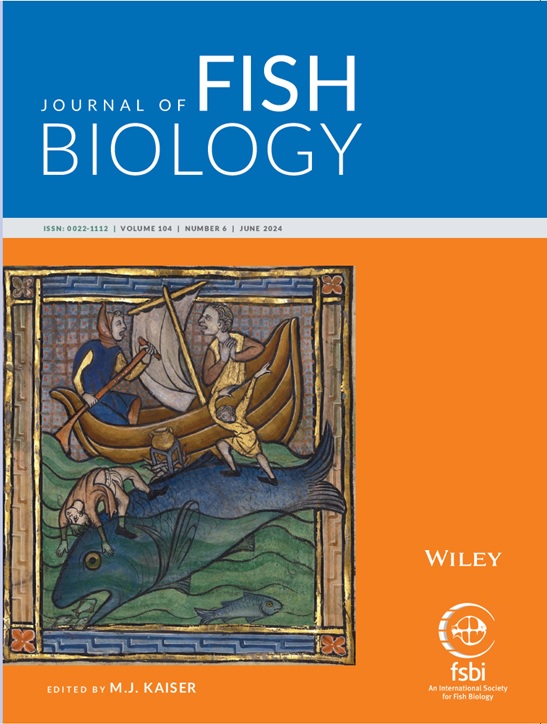A recent paper authored by the Sea Around Us’ PI, Dr. Daniel Pauly, research assistant, Elaine Chu, and Dr. Johannes Müller from Leiden University, has made the cover of the June print issue of the Journal of Fish Biology, where it was introduced by a brief essay in the ‘Between the Covers’ section. The image that illustrates it is that of a large mythical sea creature known as an Aspidochelone, which appeared in a French bestiary around 1270 A.D.
The paper, titled “Brobdingnagians and Goliaths: Two forms of gigantism in fish,” identifies, for the first time, two forms of gigantism in fish: Brobdingnagian gigantism, which applies to populations within a species, or species within a genus or higher taxon, that become giants in certain habitats; and Goliathan gigantism, which refers to individuals within a population that get considerably bigger compared to other adults in the same habitat.
According to the authors, various ecological and evolutionary rules explain Brobdingnagian gigantism but not Goliathan gigantism. For the latter, they propose a mechanistic hypothesis that describes this phenomenon in terms of the reduction of oxygen requirements that individual fish experience by gaining access to larger, more energy-dense prey and/or moving to cooler waters.
Not only does cooler water contain more dissolved oxygen than warm water, but it lowers the oxygen requirements of fish. Gills supply oxygen via a two-dimensional surface through which oxygen diffuses into the body whose oxygen requirements grow in three dimensions (length, height and width), creating a ‘dimensional tension’ that limits fish growth. However, in fish that can get big, the gills are structured in a way such that a small reduction in oxygen demand results in a large increase in the weight at which oxygen supply just meets the demand for maintenance. Thus, Goliathan gigantism – the authors suggest – is more likely to operate in fish that can get big in the first place, such as Nile perch, than in fish that remain small, as the structure of their gills requires them to reduce their oxygen requirements to a much larger extent than in big fish to achieve, say, a doubling of their weight.
“This work by Pauly et al. has proposed a powerful new framework for looking at gigantism, which may finally begin to unravel the mystery of giants below the waterline,” William Bernard Perry, senior editor of the Journal of Fish Biology, wrote in his ‘Between the Covers’ essay “James and the giant perch: a fresh framework for understanding gigantism in fish.”
The paper “Brobdingnagians and Goliaths: Two forms of gigantism in fish” has also been made open access from June to September 2024. To read it, visit this link.


